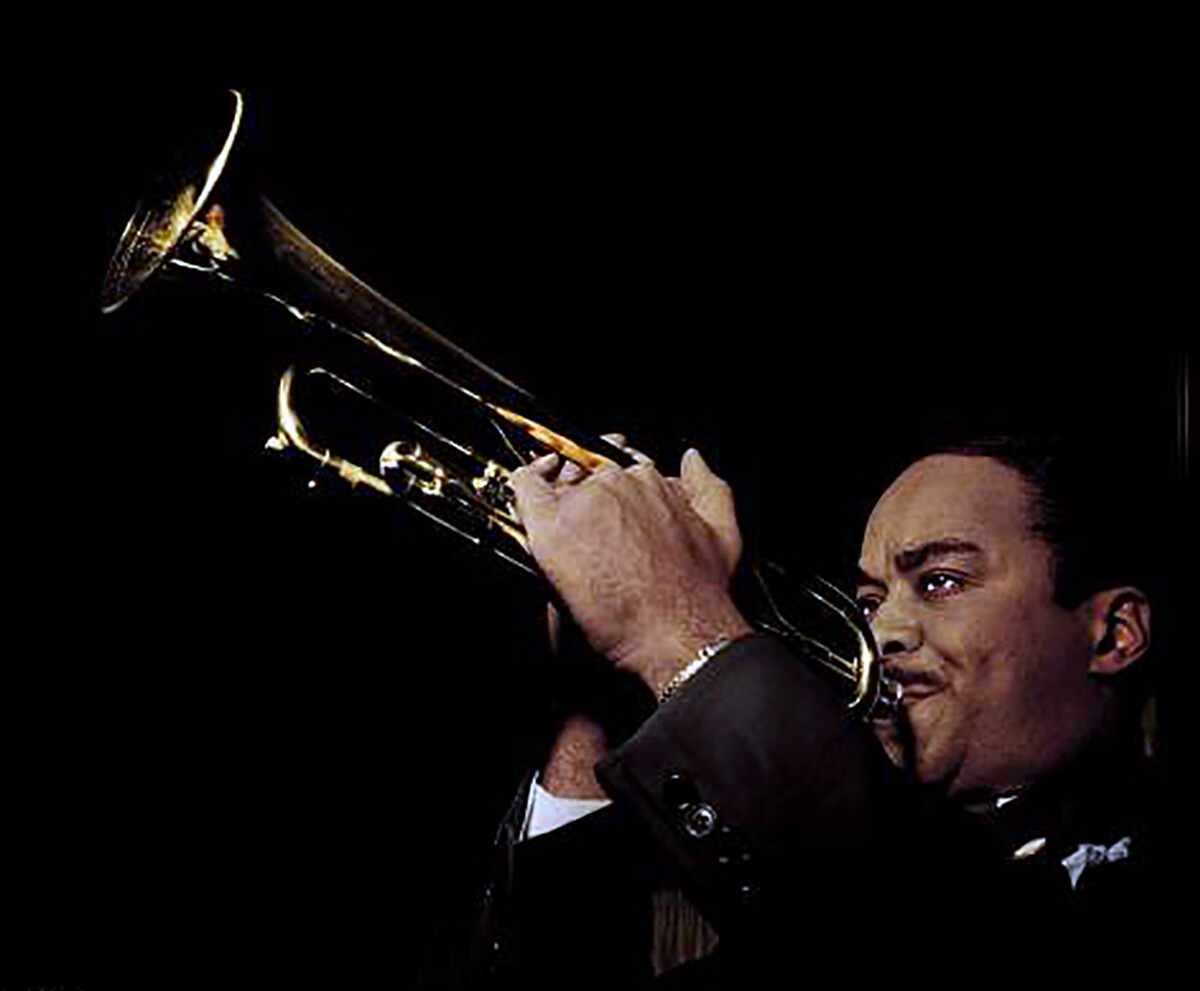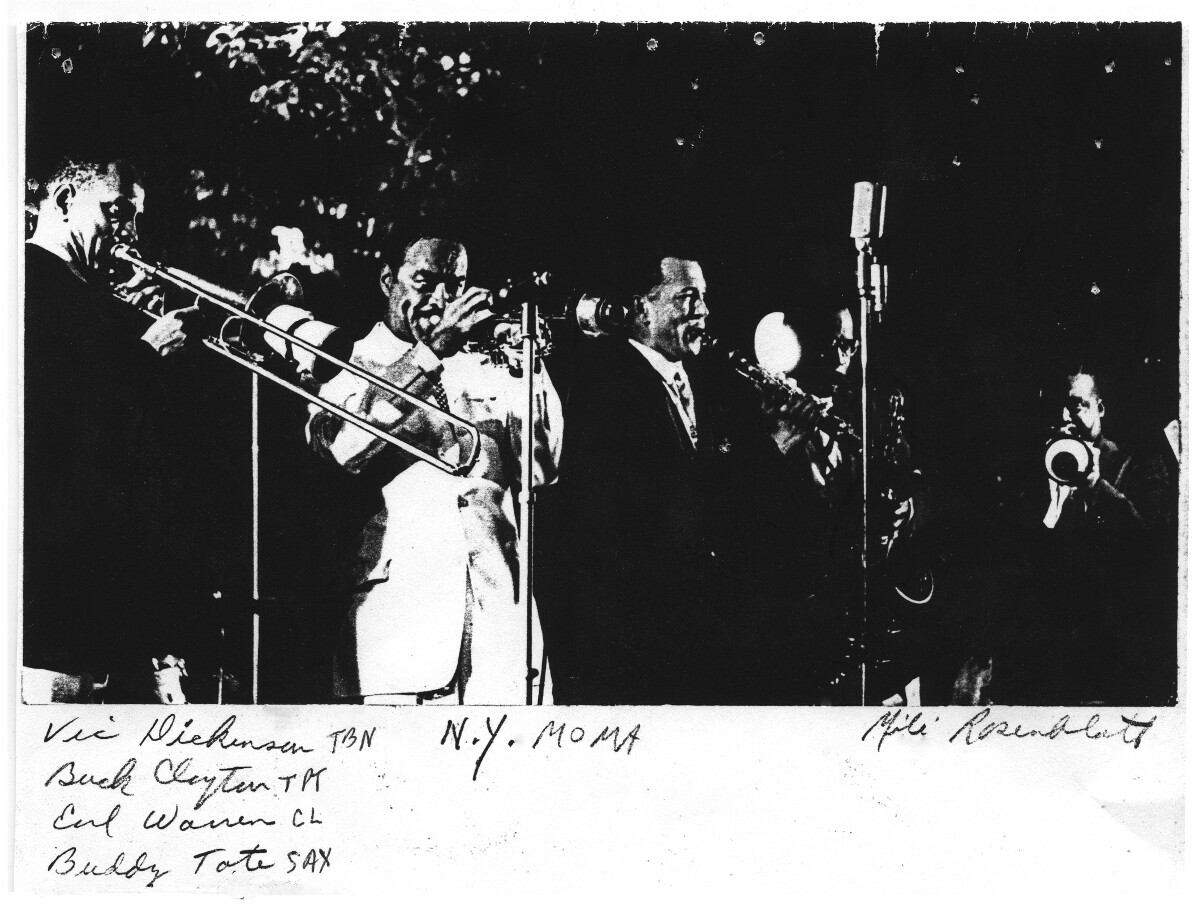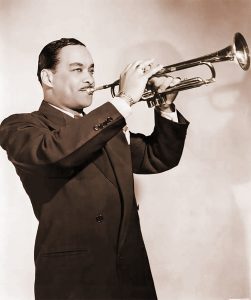
Jazz trumpet player Buck Clayton is best known for his role in the early years of the Count Basie orchestra and sensitive accompaniment to Billie Holiday on records. Clayton’s burnished, understated trumpet tone and tasteful use of cup-mute were distinctive. In later years, his style came to define the Mainstream Jazz movement.
Clayton clip A – Introduction – Bugle Blues & Rampage in G Minor.mp3
The personal musical style of Buck Clayton (1911-1991) featured a flowing and melodic approach to improvisation, a refined tone, subtle use of mutes, a great feel for the blues and fine technique. Buck’s trademark sound was more streamlined, smoother and intimate than his contemporaries.
Clayton’s peers recalled his striking good looks, grand sartorial style and memorable blue-green eyes that won him the nickname “Cat Eyes.” His sly, muted trumpet sound was an essential element of the innovative Count Basie Orchestra style in hits like “One O’clock Jump” and “Jumpin’ at the Woodside.”
Widely respected among musicians, Clayton was NOT a bravura soloist in the Louis Armstrong manner, though he reportedly showed greater passion in live performances than on records. Buck’s restrained style and melodic improvising made him a popular soloist through the Swing era. But as Swing made way for Bop, Clayton’s stance in-between but independent of both camps came to be called Mainstream Jazz.
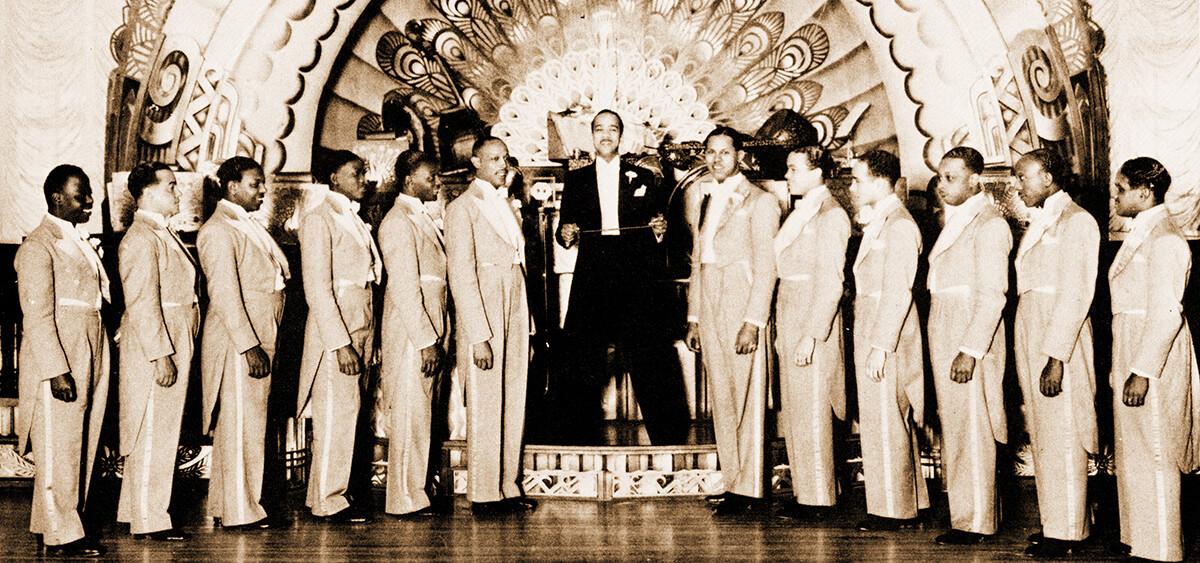
Clayton Clip D – West Coast 1933-34 – Them There Eyes & What’ll It Be.mp3
Early Years Out West, 1933-34
Buck Clayton’s brief but colorful stay in Los Angeles is often overlooked — perhaps because he made no records. The lively episode was recounted in his entertaining autobiographical memoir, Buck Clayton’s Jazz World (1986).
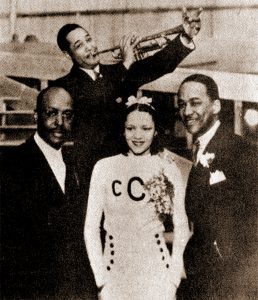
Barely out of high school he was trying to break into the music business while working odd jobs — barbershop, garage, pool hall. The Central Avenue District of L.A. was a jumping jazz scene where he hung out and became acquainted with notable musicians — bassist Milt Hinton and bandleaders Paul Howard, Charlie Barnet and Lionel Hampton.
Clayton worked as a film studio extra, encountering movie actresses Loretta Young and Ginger Rogers. He became familiar with several Hollywood entertainers and flamboyant celebrities such as the prominent local boxer Gorilla Jones, who strolled down Central Avenue with his lion cub on a leash.
Buck met his inspiration Louis Armstrong, who was then playing at Sebastian’s Cotton Club in L.A. He wrote that in their first encounter Satchmo showed him how to make a gliss (glissando: a smeared or bent note) and introduced him to marijuana.
Duke Ellington and The Famous Orchestra came to Hollywood to film the picture, Murder at the Vanities. Buck became friendly with Duke and most of the band, working briefly for Ellington.
Duke ‘surprised’ Clayton by hosting a large celebrity-studded wedding for him. A grand affair, it was held at the film studio with specially constructed bandstand and seating for such attending luminaries as Mae West and gangster-film actor George Raft while the newsreel cameras rolled.
Duke and the orchestra actually performed for the marriage ceremony and reception after: “Cootie [Williams] and Tricky Sam Nanton growled the wedding march,” reminisced Buck. The studio commissary produced “the biggest cake I ever saw made for me and my wife. Ivie Anderson sang . . . Duke did a concert of numbers.”
A couple weeks later Clayton and his new bride were on a ship to China. His band, the Gentlemen of Harlem, accompanied piano player Teddy Weatherford for a 1934-35 residency at the top nightclub in Shanghai, the Canidrome. During the stay, he worked closely with impresario and musician Li Jinhui. Buck adopted Chinese musical scales into his composing and arranging; and he had a notable impact on popular music in China.
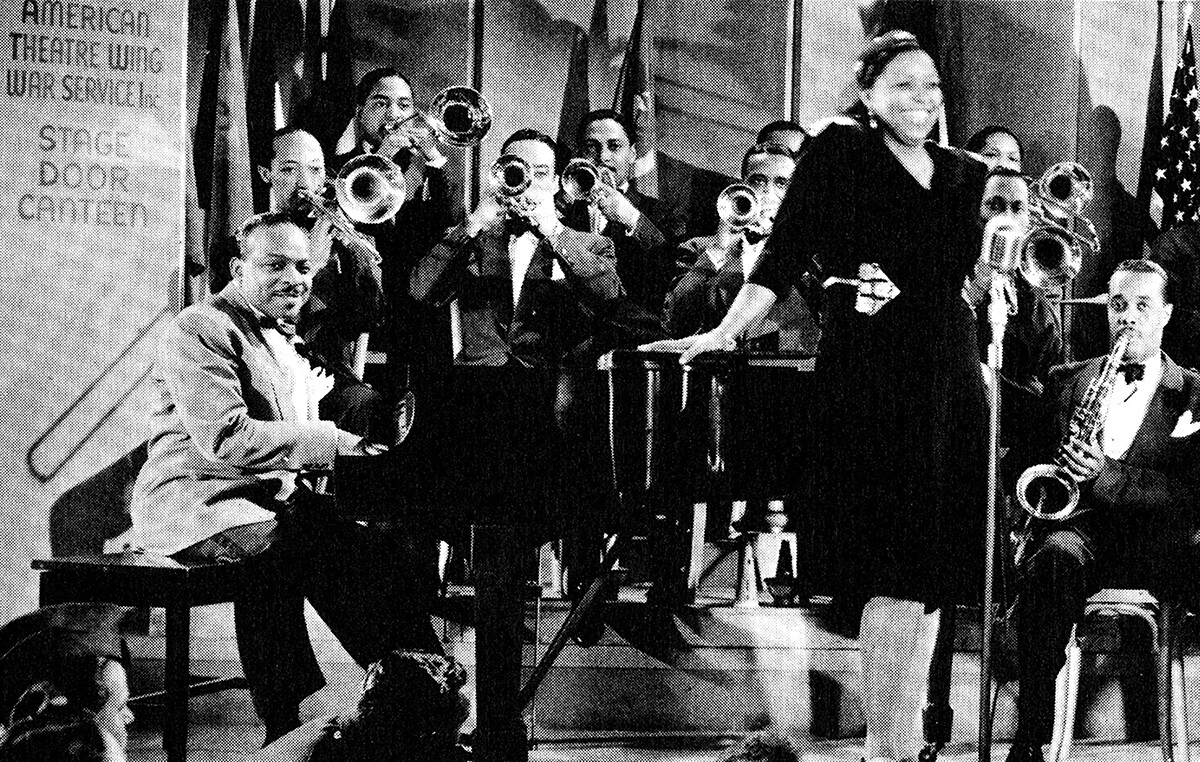
Joining Count Basie, 1936
Though Clayton was born and raised in Kansas that’s not how he became part of the Kansas City music scene. In 1936 he just happened to be in K.C. when Basie needed a trumpeter and practically hired him on the spot. Clayton was on every recording of the Basie orchestras and small bands from their first emergence on record in 1936 until 1942 (save a small handful of sessions).
The Basie sound was like no other. They could blow other bands off the bandstand or create dark and mysterious moods with exotic harmonies. Buck was a perfect match for the Basie crew, writing: “they never let up. They would swing you into bad health . . . I had never heard such swingin’ music in my life . . . there were only nine of them, but that nine could out-swing anything that I’d ever heard.”
Clayton Clip B – Joining Basie – Dickie’s Dream & Good Morning Blues.mp3
Though initially shocked to be offered only $14 dollars a week, Buck took the job anyway because he loved their music. His timing proved fortunate; the orchestra soon moved East and hit it big. Clayton became a valued component of the inner circle. Unofficially he was the orchestra’s music director, also contributing tunes and arrangements. The sound of his muted trumpet was a key textural component integral to early Basie hits.
His vital role extended to the landmark small band records of Count Basie and the Kansas City Five, Six and Seven (1938-39). Buck co-starred in those combos with saxophonist Lester Young, trombonist Dickie Wells, Basie and his famed rhythm section. Their success was part of a broad trend of successful jazz combos that sold well, transforming and advancing Swing music.
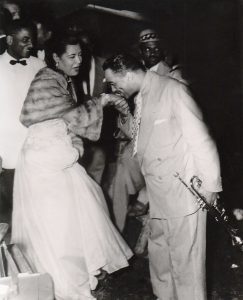
With Billie Holiday, 1937-39
Billie Holiday (1915-1959) sang briefly for the Basie orchestra. She and Buck became very close and were probably lovers. Buck recorded around thirty titles with her during 1937-39.
Some of Holiday’s finest studio accompanists, like Clayton, were often on loan from the Basie orchestra: tenor saxophonist Lester Young, guitarist Freddie Green or drummer Jo Jones. The intimate musical partnerships of Lester, Buck and Billie set a new paradigm of close interaction between vocalist and jazz horn.
Clayton Clip C – Recalls Billie Holiday – He’s Funny That Way & Can’t Help Lovin’ Dat Man.mp3
In his memoir Clayton recalled: “Such pleasure I had backing up Billie’s songs to her vocals. When she would record I would watch her mouth and when I saw she was going to take a breath or something I knew it was time for me to play between her expressions. It’s what we call ‘filling up the windows’.”
Life After Count Basie
Clayton’s tenure with Basie ended when he was drafted in November of 1943. He was briefly in the US Army during the Second World War. Fortunately, he was stationed in New Jersey, permitting him to continue recording and jamming in New York City. He played music under the leadership of Sy Oliver and Mercer Ellington (Duke’s son), winning an Esquire Gold Award for “Best Musician in the Armed Forces.”
Buck’s career flourished through the 1940s and ‘50s. It’s little appreciated that, aside from his fame with Basie and backing Billie, Clayton had an independent career as a recording star, soloist and arranger. He wrote and arranged for Tommy Dorsey, Benny Goodman and Duke Ellington. He worked or recorded with tenor saxophonists Coleman Hawkins and Don Byas, singer Jimmy Rushing, clarinetist Mezz Mezzrow, Earl Hines, Sidney Bechet, Norman Granz’ Jazz at the Philharmonic and appeared in the film, The Benny Goodman Story.
Clayton was one of the few trumpeters to mature before 1940 who successfully adapted to the changes in Jazz after WW II. Though he never made a fulsome transition to Bebop or Modern Jazz, Clayton took an independent stance that many called Mainstream Jazz (or Bop-influenced Swing). He waxed surprisingly progressive recordings in the mid-1940s with Ike Quebec and composer/pianist, Leonard Feather.
Clayton was a valued all-star soloist for studio jam sessions and on the international jazz festival circuit, touring Australia, Japan and Europe several times with extended stays in France. Learning French easily, he recorded in Paris with a sextet under his own name in 1949.
Clayton Clip F – Composer and arranger – Nancy’s Fancy, Blues in First, Rattle and Roll.mp3
Buck Clayton Swiss Photo Gallery
In recent years these photos of Clayton in Basel and Bern, Switzerland from 1949 and 1960 have become available.
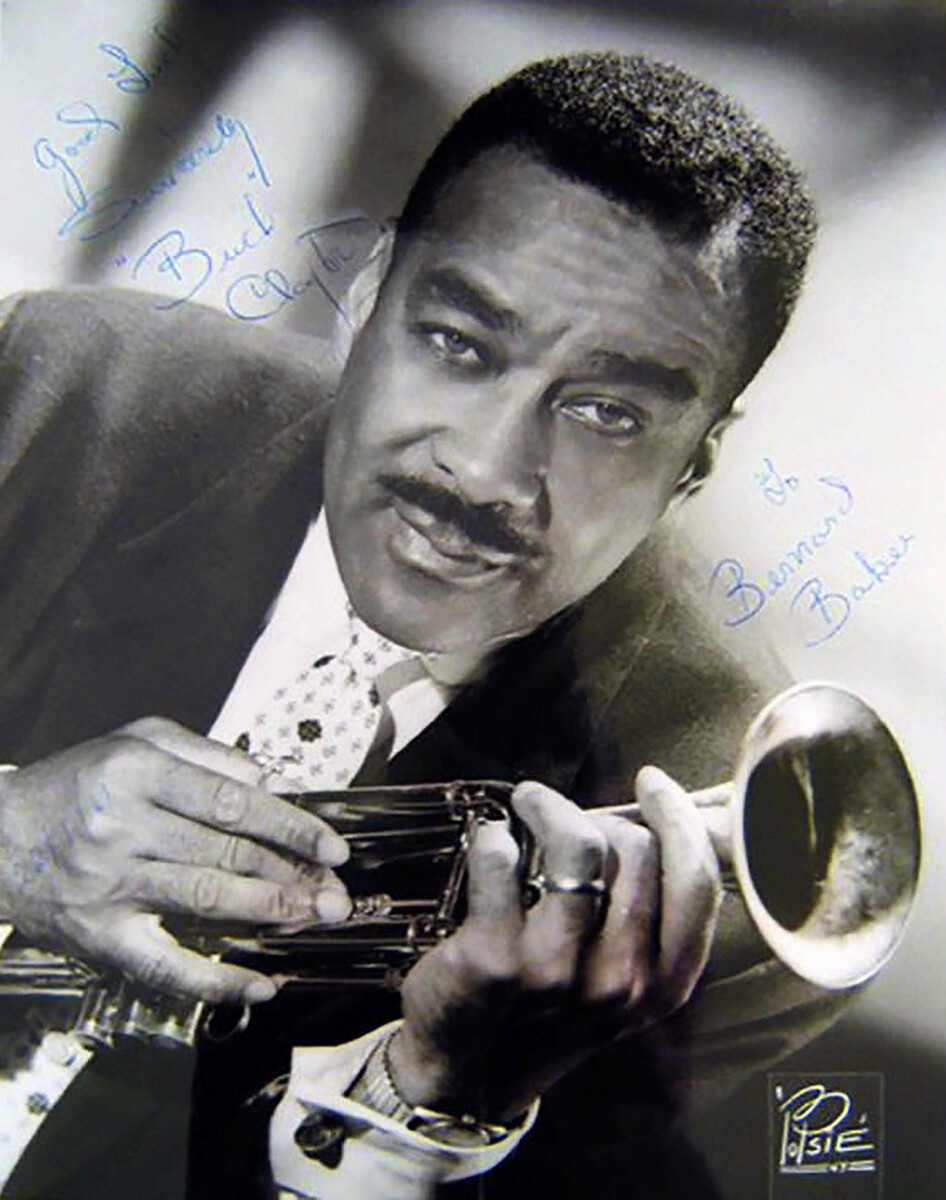
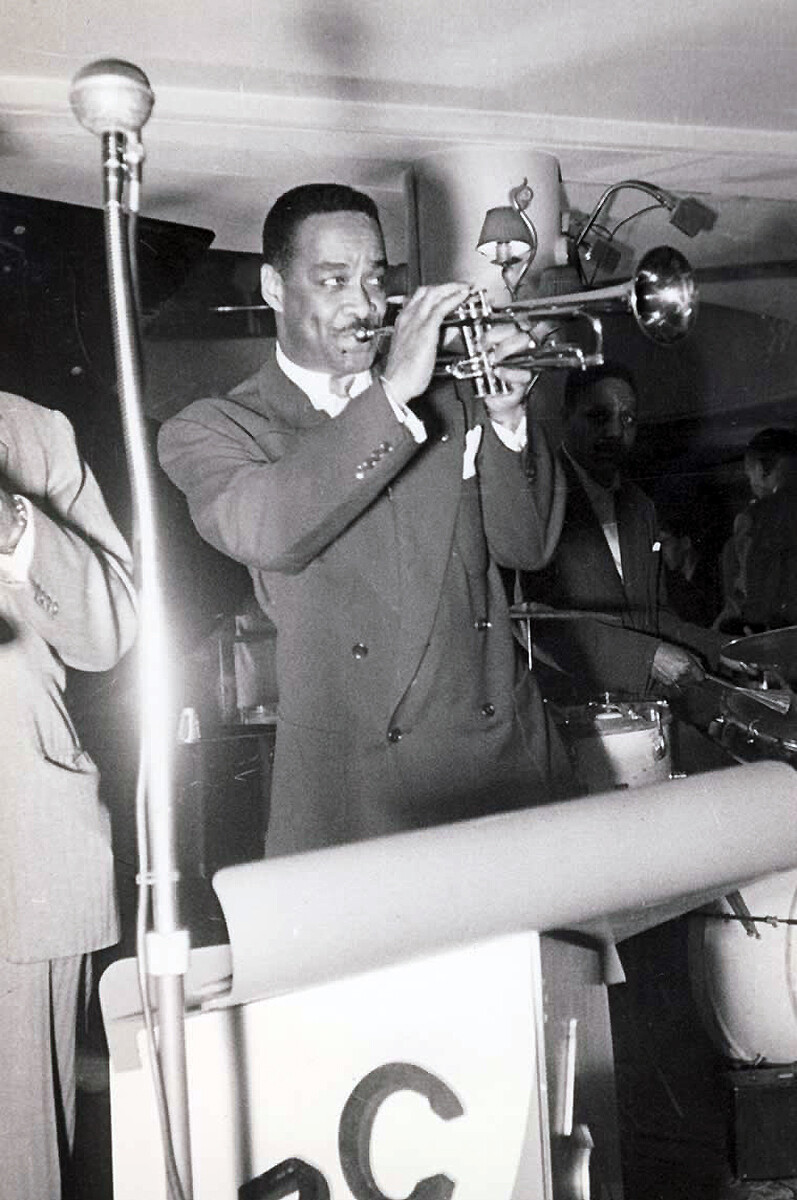

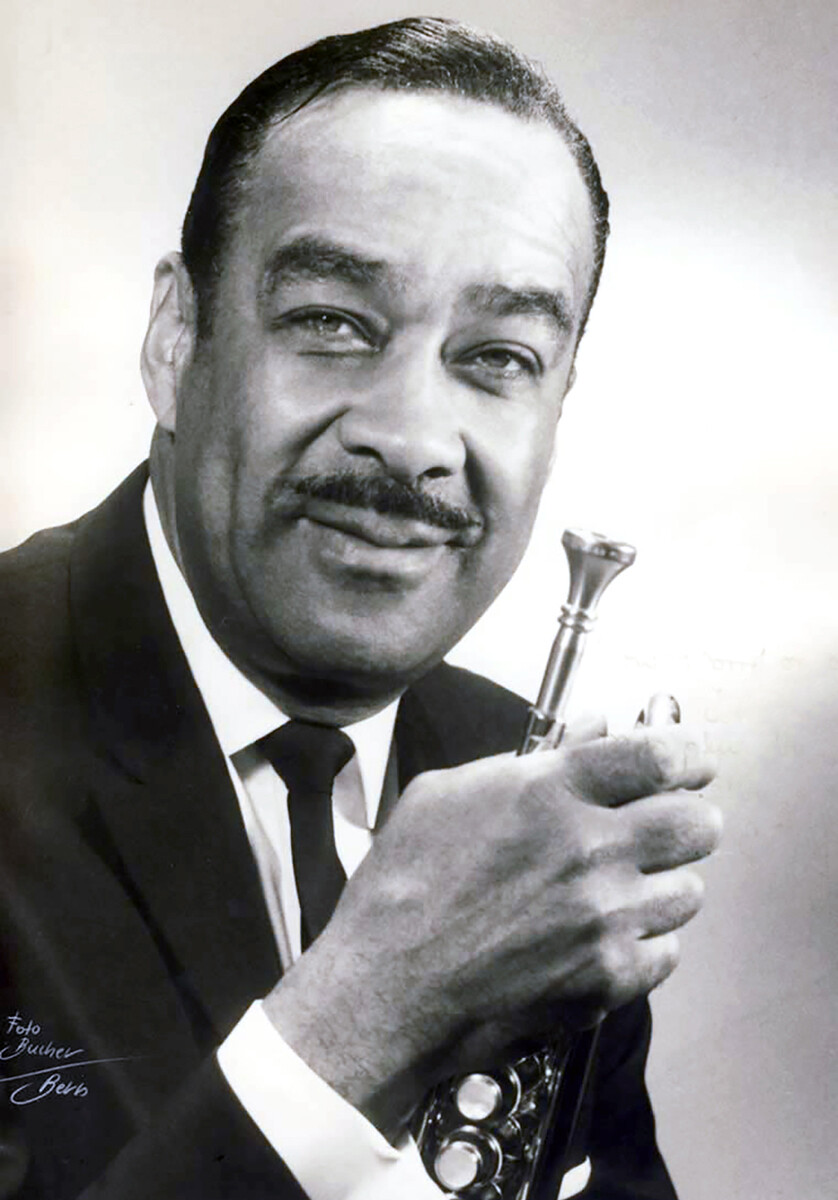
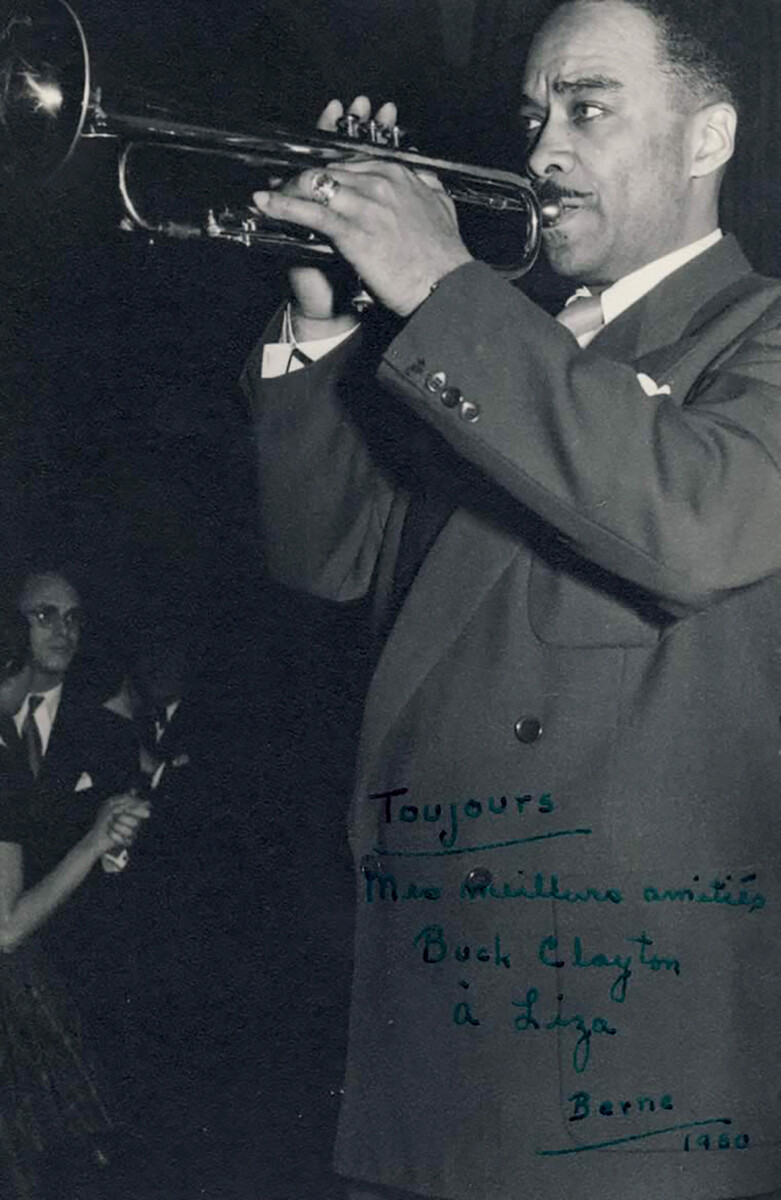
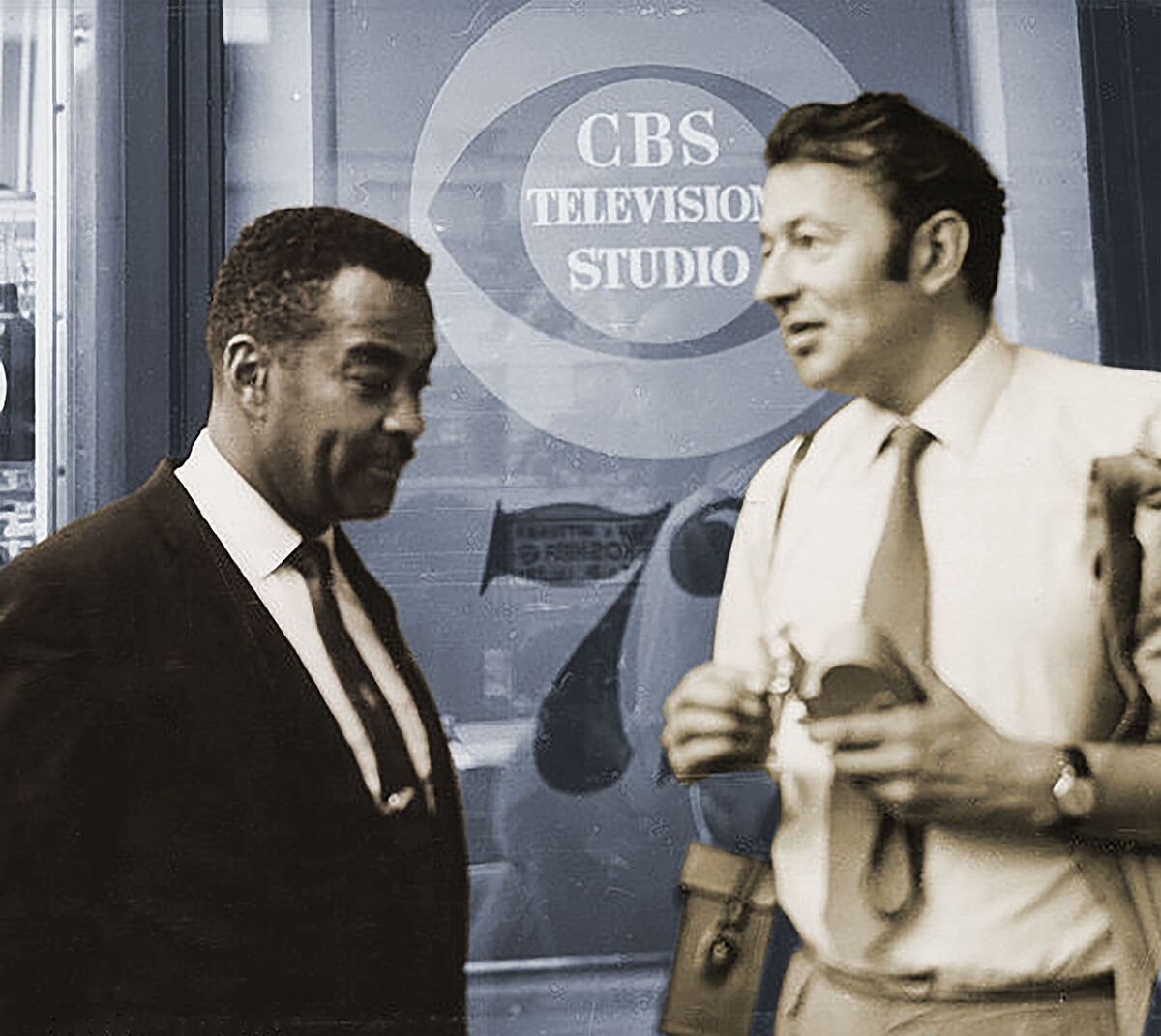
Buck and Humph, 1964-66
Humphrey Lyttleton (1921-2008) was the predominant British jazz trumpeter of the 1950s and ‘60s. He invited Clayton to join him making records and touring England. At this time Lyttleton was performing in the Count Basie style. The 1965 tour was a Kansas City Jazz Show — a Swing revival starring Buck Clayton, Ben Webster (tenor sax), Vic Dickenson (trombone) and blues shouters Big Joe Turner or Jimmy Rushing.
Clayton Clip E – With Lyttleton – Wrestler’s Tricks & One for Buck.mp3
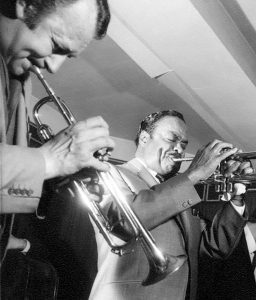
Over the course of several tours the two had, wrote Clayton, “a ball blowing together” and became fast friends. Both wrote in their memoirs of the deep personal and musical rapport they shared. In Buck’s autobiography – with a foreword by Lyttleton — he dedicated an entire chapter to their time together, declaring them “trumpet brothers.” Buck wrote of his delight at riding in Humph’s sports car, racing through the rolling English countryside and stopping at roadside pubs for meat pies and ale.
Clayton Clip G – Composer and arranger – Topsy 1967.mp3
Farewell to A Well-Dressed Cat
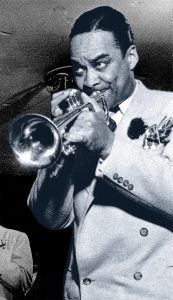 Buck Clayton first gained popularity as a foundational component of the early Count Basie orchestra and related Kansas City combos. His sensitive accompaniments to Billie Holiday on record remain a tasteful exemplar of horn accompaniment for jazz singer. Today, this evergreen artist is recognized in his own right as a talented music director, bandleader, arranger and composer.
Buck Clayton first gained popularity as a foundational component of the early Count Basie orchestra and related Kansas City combos. His sensitive accompaniments to Billie Holiday on record remain a tasteful exemplar of horn accompaniment for jazz singer. Today, this evergreen artist is recognized in his own right as a talented music director, bandleader, arranger and composer.
In the 1980s he lived in New York City, wrote his memoirs and led an orchestra. His composing skills came to fruition anew with the Buck Clayton Swing Orchestra for which he wrote dozens of tunes and arrangements. He taught at Hunter College (CUNY) and toured Europe again in 1983. Clayton died in 1991 about a month after his 80th birthday.
This dapper all-around musician was an original, sensitive and durable voice of jazz. Sustaining a creative and cooperative outlook for more than six decades, he embraced and resynthesized old and new with grace and modesty. The subtle tones of Buck Clayton’s horn are woven into the very fabric and texture of mid-20th Century American Popular music and Jazz.
Clayton clip H – Cup-Mute Clayton.mp3
The stories of Buck Clayton and classic jazz continue at the JAZZ RHYTHM website: www.JAZZHOTBigstep.com.
Sources and further reading:
Buck Clayton’s Jazz World, Part One
Buck Clayton’s Jazz World, Part Two
Buck Clayton’s Jazz World, Buck Clayton (Oxford University Press, 1986)
Black Beauty, White Heat: A Pictorial History of Classic Jazz, 1920-50, Frank Driggs and Harris Lewine (Da Capo Press, 1996)
Clayton and friends photographed at MOMA New York City by Mili Rosenblatt.
Billie Holiday http://www.jazzhotbigstep.com/24201.html
Billie Holiday https://syncopatedtimes.com/billie-holiday-profiles-in-jazz
Humphrey Lyttleton http://www.jazzhotbigstep.com/24222.html
Dave Radlauer is a six-time award-winning radio broadcaster presenting early Jazz since 1982. His vast JAZZ RHYTHM website is a compendium of early jazz history and photos with some 500 hours of exclusive music, broadcasts, interviews and audio rarities.
Radlauer is focused on telling the story of San Francisco Bay Area Revival Jazz. Preserving the memory of local legends, he is compiling, digitizing, interpreting and publishing their personal libraries of music, images, papers and ephemera to be conserved in the Dave Radlauer Jazz Collection at the Stanford University Library archives.





